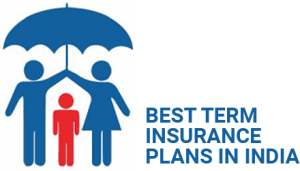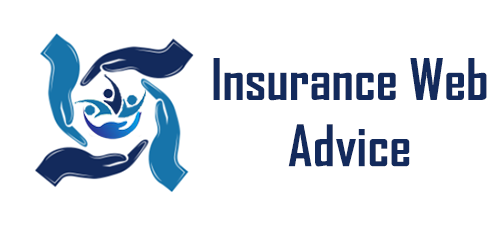Best term insurance plan : Term life insurance is a type of life insurance that provides coverage for a set period of time. It shares similarities with whole life insurance, but the cost and coverage per month is much lower than its more expensive counterpart.
What is the Best term insurance plan?
Term life insurance is offered by companies that offer risk protection (traditional insurance) as well as savings and investment opportunities. Term life plans vary in coverage amounts, premiums, degree of flexibility and even the company’s reputation. The best term life insurance offers a wide variety of coverage options-from term to permanent whole life. It also varies in cost and affordability among the various types of plans. Term insurance can make sense for everyone who may need it so that you will have a good protection for yourself since you can use it until the full amount of the policy has been paid off or when seniors are eligible on their retirement plan or are on Social Security.
Options for term insurance
Term Life Insurance is the most common type of life insurance. It pays beneficiaries a monthly amount for the period of time that they are insured. For example, two million dollars in coverage could pay out the full two million dollars to only one person, or a maximum amount of $500,000 be paid to 3 people (multiple payouts). This type of insurance is always on a “term,” and coverage ends when that term expires. The biggest benefits of these kinds of policies are that you can add term life insurance coverage at any time during your life at relatively low cost, and the premium payments will be more predictable than under a whole or universal life policy.
Some companies also offer supplemental term insurance plan, which provides extra coverage during certain periods of your life, such as when you have young dependent children. This type of policy would provide an additional death benefit if one of your children were to die or become disabled. Coverage amounts will be added to the other sum assured and if the total sum insured is less than $100K then it is usually added on as a rider to a basic Term policy. It may not make sense to take both types of insurance from one company. It also makes sense to know that some companies allow you to buy “supplemental” or “supplementary” terms if you want additional coverage when your children are older.
Types of term insurance
There are 4 main types of term life insurance: Term Life Only This plan pays you a set amount of money for a set period of time, without any additional benefits. You can pay an extra fee to buy a rider that offers other, more specific coverage. This type of policy is offered by many companies and it’s a good policy to know about, since it’s the cheapest type of term life insurance. ‘Term’ riders are usually offered by larger companies and you need to look closely at all the fine print when you purchase your policy.
Level term insurance
A level-term policy is an even amount of protection for a set period of time. Since there is no accumulation of cash value, this type of policy is cheaper than other policies. However, it provides no financial help after you stop paying premiums. Increasing term insurance
This plan has a higher premium for the first few years and then it decreases every year after that. For example, if you choose 10-year level term insurance, your premiums will be higher during the first 10 years and then they will gradually decrease each year until the end of your contract term. This policy provides you with lifelong protection and savings because your initial payments are higher than those for other plans.
Decreasing term insurance
This plan’s premiums are lower than those on an increasing-term policy. This type of policy has the most progressive feature. When your coverage term is near its end. The level-term plan has almost unlimited protection and you will pay a low rate of premium. However, when your term is near its end, the increasing-term insurance provides only limited benefits to you at a high rate of premium.
The return of premiums plans
These plans have the option of increasing your monthly payments every time your term is near its end. In these plans, the rate you pay increases with time, not age. This option combines all of the advantages of a level-term plan and an increasing-term plan. One advantage of this type of policy is that it can provide added benefits for you and your family if you have a disability or become unemployed.
Convertible term plans
A convertible term plan can be converted into a permanent plan at any time within the elimination period. This type of policy is very beneficial to those who want to convert their policy into whole life. But feel that they might need the security of term insurance later on.

Convertible term policies are like level-term, increasing-term and decreasing-term policies but with a built in protection against interest rate increases.
As these policies all have a cash value accumulation feature. Many companies offer this option as an additional feature on a level- or increasing-term plan.
Key factors about term insurance
When considering what a good term policy might look like, follow these key factors:
Deductible
A deductible is the amount you’re required to pay before your policy will cover any medical expenses. Keep in mind that most policies have deductibles that increase in size every two years to keep them affordable.
Stages of Benefits
A plan with stages of benefits starts off weak. But slowly increases over time until it has many features like disability protection, loan or debt cancellation and mortgage protection.
Maximum Payouts
The amount of money you can receive each month, even if you have a major illness.
Annual Increase
Typically around 5-10 percent, which can be a bit of a gamble.
Loan Protection
This coverage provides for loan repayments if medical expenses exceed the amount of your insurance and financial resources (sometimes called “medical gap”).
Disability Coverage
If you are unable to work because of an injury or illness, your plan will pay for medical expenses.
Mortgage Coverage
This provides for loan repayments if the insurer determines that you are unable to maintain a minimum income to cover expenses.
Life Insurance Benefits
This covers your entire life while you’re alive. No matter how much money your family has (this is sometimes called “Double Protection”).

